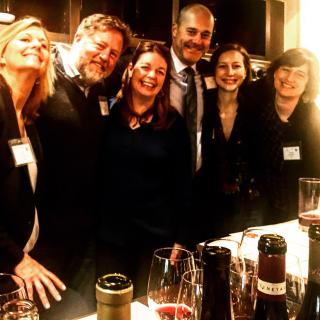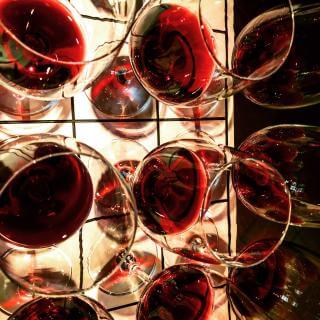
Pinot Noir in Oregon
As a wine lover, you know that Oregon Pinot Noir is some of the best in the world.
Many feel Pinot Noir in Oregon ranks equal to top quality Pinot Noir from Burgundy.
In fact, many wine experts sometimes find it difficult to tell the difference between Oregon Pinot Noir and Burgundian Pinot Noir.
Pinot Noir in Oregon: Oregon’s Golden Era
Many agree that Pinot Noir in Oregon burst into the international scene in the 1970s, when David Lett’s Eyrie Vineyards’ 1975 Pinot Noir
South Block Reserve Pinot Noir was ranked 10th in its category in the Wine Olympics held in Paris in 1979.
Then it won another competition in Burgundy.
At that time, the Oregon winemakers of that era were young and raising families.
They were excited about the prospects of showcasing Pinot Noir grown from their terroir.
Now, nearly a half century later, the children of these Pinot Noir pioneer families are carrying on the tradition.

Pinot Noir In Oregon: New Generation
Recently the new second generation winemakers from three pioneer Oregon wineries came to New York city.
Their mission was to give select wine journalists insight into this special terroir.
Individually, the winemakers told stories of their childhood in the 1970s and 1980s.
They spoke of their parent’s struggles.
And they described how the pioneer families had dinners together to share tips about clones, wine making, and grape growing.
These second generation winemakers all knew each other as children.
It was refreshing to see that they – like their parents – are working together and sharing ideas today.
The winemakers included:
Adam Campbell from Elk Grove;
Luisa Ponzi from Ponzi Vineyards;
Alex Sokol Blosser from the winery Sokol Blosser.
As a trio, they were incredibly energetic and really excited to speak about the histories of their family.
They also asked the audience to indulge in their “geeking out” about the terroir, and the audience encouraged them to do so.
After all, the purpose of this Oregon Pinot Noir event is to showcase how the Pinot Noir grape expresses itself in three different vineyards, in wine made by three different winemakers,
Pinot Noir in Oregon: The 2GV Project
Yet another objective of this event was to introduce a collaborative effort between the siblings at Elk Grove, Ponzi, and Sokol Blosser.
Wine experts tasted nine different individual “component wines” representing wines made by each of the three winemakers in the La Boheme vineyard, the Madrona Vineyard, and the Old Vineyard Block.
Each of these vineyards has a different soil type and different age of vines.
Then the individual component wines were blended together to make the 2GV wine, that would be a feature of the Willamette Valley Auction and also be available to distributors.
The La Boheme Vineyard
This vineyard was planted in 1985 and has Marine sediment. It is located in the Yamhill-Carlton AVA, which is one of the best appellations for growing Pinot Noir.
The elevation here is 800 feet so you know the resulting wines will have incredible aromatics and high acidity.
Each of the three winemakers took turns speaking about their experiences growing grapes on this terroir.
And each of the wines presented by the three winemakers had a different texture and flavor profile, even though they were all from the same vineyard.
For example, Adam of Elk Grove destemmed 80% of his grapes, used William Seylen yeast, and 25% new French oak.
Luisa Ponzi destemmed 100% of her grapes, performed twice daily punch downs, used ambient yeast fermentation, and then 25% new French oak.
Alex of Sokol Blosser also destemmed 100% of the grapes, inoculated with commercial yeast, and fermented in an oak upright with 20% new French oak.
Madrona Vineyard
Madrona Vineyard was planted in 1985. The soil is Laurelwood and it is located in the Chelalem Mountains.
The elevation is 450 feet and they are Pommard clones.
Adam of Elk Cove uses 85% whole cluster with the William Seylem yeast and 25% new French oak.
Luisa Ponzi uses 50% whole cluster with a 7-day post fermentation and 30 days in the fermenter with ambient yeast and 25% new oak.
Alex of Sokol Blosser uses 100% destemmed grapes, ambient yeast, and 20% new oak.
Old Vineyard Block
This vineyard was originally planted in 1971 but replanted in 2007.
The soil is the famous Jory soil of Oregon. It is in the Dundee Hills AVA and has an elevation of 500 feet.
The clones are Pommard on 420H root stock.
Adam of Elk Cove uses 85% whole cluster, William Seylem yeast, and 25% new French oak.
Luisa Ponzi uses 100% destemmed grapes and bleeds (saignee) 10% of the must on the second day.
As usually, she uses 25% new French Oak.
And Alex of Sokol Blosser destemmed 100% of the grapes, a house yeast for fermentation, and new Mercurey Prestige Barrels.
Pinot Noir in Oregon : Observations on the Component Tasting
This was a component tasting and these were not wines to be bottled individually, though all were excellent.
It was interesting to note how even on the same terroir, the Pinot Noir from Oregon could take on such different expressions.
For example, one winemaker had a more delicate touch no matter what vineyard the grapes were grown.
The last wine to be tasted was the final 2GV blend.
It was an excellent wine characterized by a great deal of complexity and a long length of finish. It should improve for many years in a cellar.
Pinot Noir in Oregon :New World Style
Though there are always comparisons between Burgundy and Oregon, in my view there is a definitive “New World” character to Pinot Noir wines from Oregon.
For me, it is a definitive freshness of fruit and exuberant character to the wines.
Yet more and more, the Oregon winemakers do not even care about being compared to Burgundy anymore.
Though once it was taken as quite a complement.
Just like the three winemakers expressed during the presentation, it is important for consumers to recognize the special soils of Oregon.
Conclusion
These winemakers are to be commended for this excellent collaborative project designed to showcase the diversity of Oregon soils as well as the variety of wine making techniques utilized by three different winemakers.
From tasting the wine and listening to the stories, participants could get a good sense of how winemakers can put their own mark on their terroir.
Check Out These Great Resources